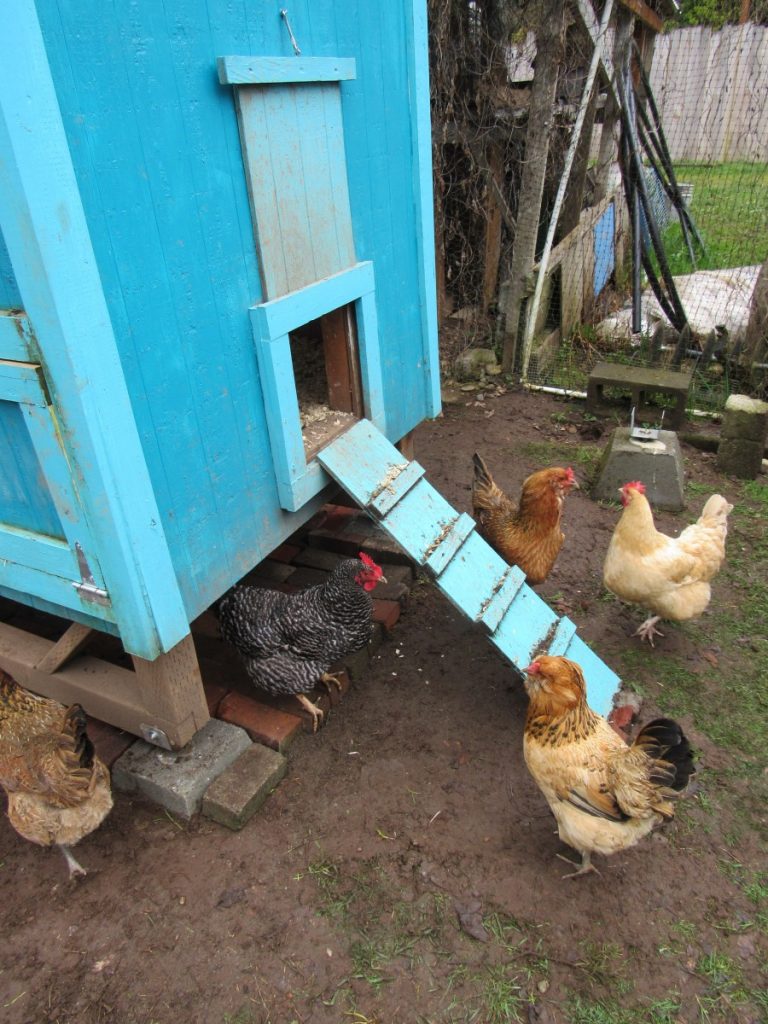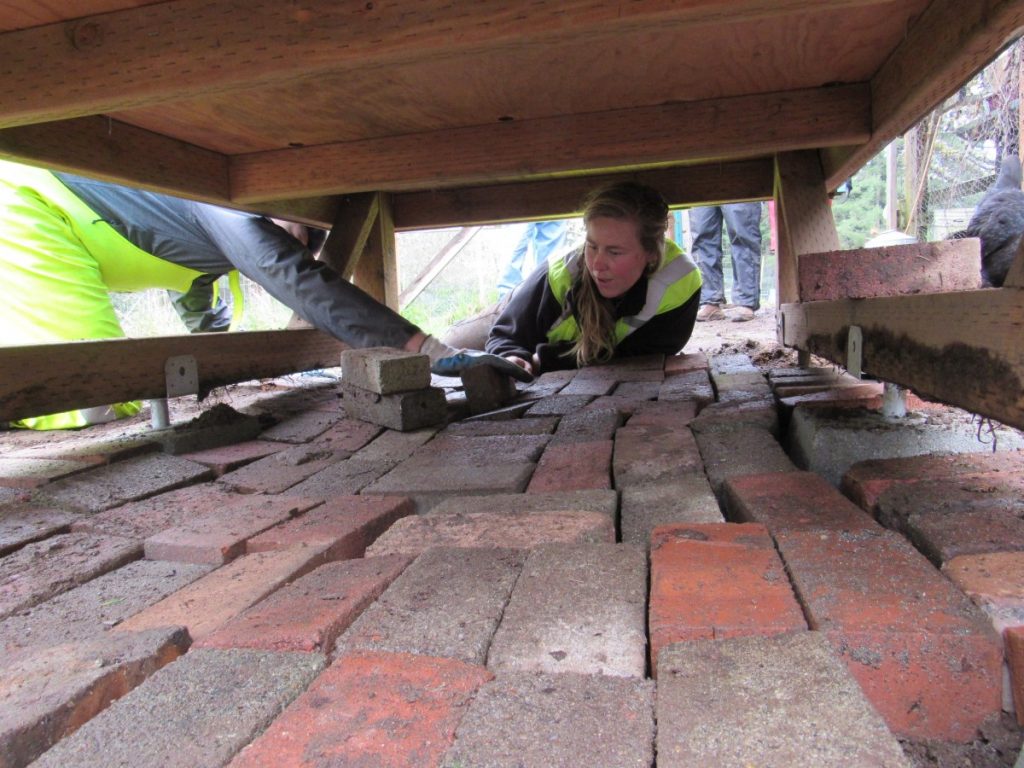Each spring, as the season changes, GRuB staff and community members, participate in the time-honored tradition of Spring Cleaning. Over the winter, a list has been compiled of all the projects to be completed and dark corners in need of a deep clean in preparation for the coming wave of activities hosted by GRuB. The intention is to beautify the space for visitors and regulars alike as well as improve the organization of the space on a range of scale. And the “All hands on deck” work party strikes a superb balance of work and play.
I arrived to an already-in-full-swing event, where a pregnant staff member is cleaning the gutters of the live-roofed bike shelter, my supervisor Katherine is emptying and sorting a storage closet, and other volunteers and staff are shuttling mulch in wheel barrows all over the farm, restabilizing the paths most traveled. I join a team of people working to dig out and level ground where the new chicken coop is going to make its permanent home.
Digging and tamping and measuring, over and over, until we get it as close to correctly positioned and level as we dare. This takes quite some time and before I know it, lunch is ready. For this momentous occasion, one of our regular guest chefs (a Slow Food Greater Olympia board member and Nutrition Educator for SNAP-Ed, Melissa Davis) created a delicious vegetable and chickpea roast with rice and two versions of an oat crumble bar, all of which was either vegan, gluten free or both! We gave thanks together, and ate together, and collaborated on next steps and where to plug the youth in when they arrive.
I was to assist Kim Gaffe, co-founder of GRuB, now Director of Programs, with leading a portion of the youth in completing the chicken coop project. We began by outlining what our goal was, strategizing how to move the coop from A to B and highlighting safety precautions and tripping hazards. Then in a concerted effort of lifters and guiders/chicken wranglers we shuttled the structure through blossoming fruit trees, over a downed fence and ultimately onto its resting place atop six cinder block pyramids with metal bracketed tops. Once in position, we measured its levelness, and fortunately for everyone there, it was close– exactly what we were aiming for.

The project was finished up by returning the dirt to bury the blocks, patting that down, and laying bricks to prevent the chickens from digging it all back up and jeopardizing the stability of their home. Clean up consisted of removing broken branches, resurrecting the gate, and washing and returning all tools. The chickens were underfoot almost the entire time, eager to lay an egg and dig in the dirt for grub. I needed to carry one of the hens while the coop was moving because she was frantically trying to find her nest there in, and sure enough as soon as we reopened the doors and set up the ramp she was in there laying an egg, before we’d even laid the last brick.

To finish out the day, we loaded up scrap metal into one truck and trash and rotten wood in another. My secondary task was to take the VGP Beast (our dump-bed truck used primarily for garden builds) to the dump, or the Thurston County Waste and Recovery Center. I, somewhat surprisingly, enjoyed the experience, AND was shocked by the cost of waste removal as well as the sheer volume of the facility. It has me thinking how strange it is that most of the average American consumer is purchasing an exorbitant amount of products each of which are generally covered and cushioned with an overwhelming amount of packaging. We then have to pay a monthly fee to collect and send that material we didn’t need in the first place elsewhere. I know that I am not prepared to fully dive into the complexity of this issue; I simply wish to identify garbage as a secondary commodity further contributing to the toxic build up experienced by our world.
Back to the week now- I spent the majority of the rest of my days working deep within the organized chaos that is GRuB Docs: the online filing system accessible to GRuB staff, interns and volunteers. I am working specifically in the Field Trip Program folder to organize and consolidate the materials, searching specifically for the “best of” curriculum and workshops as a part of the revamping of the program I previously discussed. This somewhat tedious task is affording me the opportunity to dive into the minds of previous educators and interns, and to leave a lasting mark on the program.
Lastly, this week was unusual for many reasons, most significantly because the field trips scheduled were both moved to next week. We were forced to find other tasks to complete, which worked out nicely as the herb garden beds we have on site were in desperate need of a makeover. Katherine and I led the youth in a garden planning mini-lesson, and using recycled wood from an old shed and the help of a volunteer craftsman, redesigned the beds and began remaking them.
I cannot emphasize enough how vital teamwork is to the GRuB model. Each task I worked on and project I helped complete this week was done in collaboration with many others. No one is working alone when they are at GRuB. Even the least exciting tasks are made enjoyable by the prospect of teamwork. For me, it is this group mentality of collaborating for common motives that inspires and activates me. It makes each task, no matter how daunting, approachable, and more often than not, it brings out a spirit in people that feeds into the momentum of the group- one of several reasons why I believe in GRuB’s work and consider it a success.

Be First to Comment